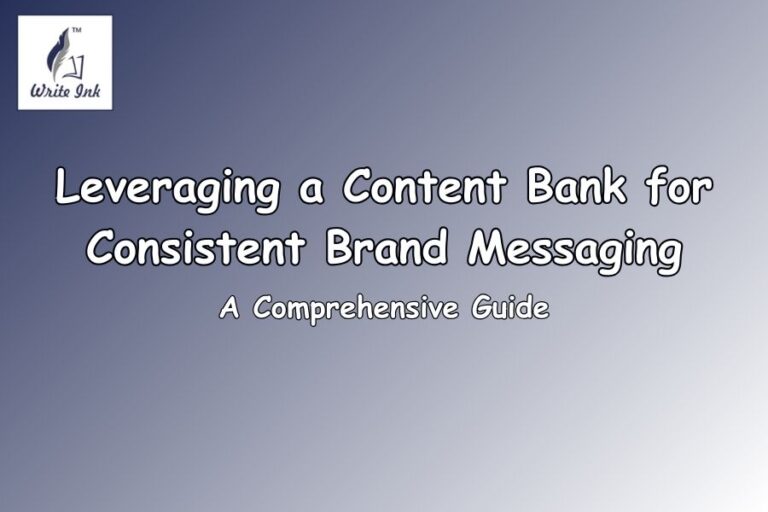The Power of Brand Storytelling – Building an Unforgettable Brand Profile
“In the world of marketing, storytelling is not just about selling a product; it’s about creating an emotional connection that lasts a lifetime.”
Introduction

In today’s hyper-saturated marketing landscape, where consumers are constantly inundated with information, effective brand storytelling techniques have become indispensable for businesses aiming to establish a distinctive and enduring brand identity. In the middle of this saturation, the capacity to carve out distinct and long-lasting storytelling for brand identity has become critical for long-term success. In attaining this goal, brand storytelling in marketing emerges as a powerful and transformative instrument.
This blog tries to elucidate the fundamental importance of brand storytelling, providing light on its capacity to capture consumers and establish emotional relationships. We’ll walk over the important components of a strong brand story, providing insights into the strategic process of building tales that appeal. Using successful examples as inspiration, we will demonstrate the practical benefit of great brand storytelling, demonstrating how it goes beyond ordinary marketing to become a cornerstone of corporate success.
In an era where attention is the most coveted currency, standing out amidst the information overload is both an art and a necessity. Brand storytelling becomes the compass guiding businesses through this complex landscape, not merely as a marketing strategy but as an integral part of the corporate DNA. It is the link that extends beyond transactional partnerships, ushering in a new era in which customers want genuine ties with the companies they choose.
This blog will take us on a trip that goes beyond the surface level of marketing approaches as we peel back the layers of brand narrative. We delve into the essence of storytelling, examining its tremendous potential not only to captivate attention but also to imprint a brand in the hearts and minds of consumers.
As we go into the domain of visual storytelling, we’ll discover how it can bring narratives to life, lifting brand profiles to new heights. Furthermore, the blog will instruct readers on how to assess the impact of their brand stories and provide them with useful tools to help them navigate the environment of effective brand storytelling. Join us as we explore the power of narrative to create a brand identity that stands out in a crowded marketplace.
Why is brand storytelling important?

Brand storytelling in marketing goes beyond traditional advertising, developing deep connections with customers. Humanising your brand makes it more relatable, fostering a sense of connection that extends beyond transactional transactions. This emotional involvement is the foundation for establishing long-term brand loyalty and trust, which are critical components for attaining long-term success in a competitive business world.
Elements of a compelling brand story

A compelling brand story could find its foundation in CARE, when simply fragmented, explains –
- Consistency – A consistent narrative across all platforms ensures that your brand’s story is unified and memorable. This creates a solid foundation for brand identity.
- Authenticity – Authentic brand storytelling is the foundation of a captivating brand story. Genuine storylines that reflect a brand’s beliefs and mission appeal to customers.
- Relatability – A relatable narrative reaches a larger audience. Understanding your target audience and tailoring your message to their experiences and objectives is critical.
- Emotional Appeal – Emotional brand storytelling has a long-lasting impact. Brands can strengthen their bonds with their customers by appealing to their emotions.
How to create your brand story?

Creating a compelling brand narrative is a strategic activity that necessitates a methodical and methodical approach. Begin by outlining your brand’s key principles, as these will form the basis of your narrative. Understanding your audience is critical; learn about their preferences, issues, and goals. Ensure resonance by tailoring your tale to target their needs and desires properly.
Create an engaging narrative by developing a story arc that draws attention, introduces suspense, and culminates with a powerful message that is consistent with your brand. Incorporate visual components, like photographs and videos, to improve and personalise the storytelling experience. Maintain a consistent narrative across all mediums to strengthen your brand story.
A strategic approach is required when creating a successful brand story –
- Define Your Brand Values – Identify the essential values that characterise your brand and define them. These ideals will serve as the foundation for your story.
- Understand Your Audience – Learn about your target audience’s preferences, issues, and goals. Tailor your story to their wants and needs.
- Create A Compelling Brand Narrative – Create a story arc that grabs the reader’s attention, builds tension, and concludes with a powerful message that is consistent with your brand.
- Include Visual Elements – Images, movies, and graphics enrich the storytelling experience, making it more engaging and memorable.
Incorporating storytelling strategy for brands

Incorporating brand storytelling into your marketing plan is a dynamic method that increases the resonance of your brand. Craft blog posts, articles, and social media content that perfectly match your brand. Storytelling in content marketing is a potent vehicle for narrative diffusion. Utilise the power of social media campaigns by posting bits of your story, utilising platforms such as Instagram and Facebook for visual storytelling. Email marketing can be transformed into a personalised storytelling tool, allowing you to interact with your audience on a deeper level.
Integrating your brand story across many marketing channels ensures consistency and strengthens your narrative. By strategically incorporating narrative into your marketing efforts, you not only engage your audience but also create a unified and memorable brand presence, which contributes to long-term success in a competitive market.
- Content Marketing – Write blog entries, articles, and social media content that are relevant to your brand’s story. Consistency across platforms helps to emphasise your story.
- Social Media Campaigns – Use social media to share excerpts from your brand’s story. Instagram and Facebook are excellent platforms for visual storytelling.
- Email Marketing – Create email campaigns that combine components of your brand’s story, allowing you to engage with your audience on a more personal level.
Examples of successful brand storytelling campaigns

Several brands have used narrative to build effective marketing. Nike’s “Just Do It” campaign is an iconic narrative that inspires a global audience by presenting stories of athletes overcoming obstacles. The “Think Different” campaign by Apple is centred on innovators who questioned the standard, linking the brand with a spirit of creativity and disruption. “Share a Coke” by Coca-Cola personalised products with individual names, fostering a sense of connection and inclusivity. These examples demonstrate the importance of emotional engagement and sincerity in connecting with audiences. Storytelling for business success goes beyond advertising to become a cultural force, cementing the brand in the hearts and minds of people, encouraging loyalty, and contributing to long-term success in a competitive marketplace.
- Nike’s “Just Do It” advertisement inspires people to push their limits by highlighting the stories of athletes who overcame adversity.
- “Think Different” by Apple – Apple’s narrative focuses on questioning the status quo and recognising innovators who have transformed the world.
- Coca-Cola’s “Share a Coke” campaign – Coca-Cola fosters a sense of connection and inclusivity by personalising its goods with individual names.
Using visual storytelling to enhance your brand profile

In the digital age, visual storytelling may help you raise the profile of your business. The use of high-quality photos, intriguing films, and engaging graphics boosts the emotional impact of your brand story, making it more relevant and memorable to your audience. Instagram and Pinterest, for example, provide a great canvas for visual storytelling, allowing you to construct a visually appealing tale that captivates your audience.
Visual aspects not only improve the storytelling experience, but they are also effective instruments for communicating your brand’s personality, values, and distinct identity. In the visually-driven universe of modern marketing, you can build a more immersive and captivating brand presence by deliberately integrating graphics that connect with your narrative, leaving a lasting impression on your audience.
Measuring the impact of brand storytelling

Measuring the impact of brand storytelling is critical for fine-tuning strategies and determining success. Analytics tools are essential for delivering insights into website traffic, social media shares, and conversion rates. These metrics provide concrete evidence of audience involvement and the efficacy of your storytelling efforts. Customer feedback acquired through reviews and comments is a qualitative indicator that reflects the emotional resonance of your brand story. Surveys and questionnaires may be extremely useful tools for gathering detailed data on how your brand story affects consumer perceptions and purchasing decisions.
Aside from quantitative statistics, qualitative indicators like brand sentiment and customer testimonials provide a more detailed picture of the narrative’s influence. Brands may tweak and modify their storytelling tactics to better connect with their audience by regularly monitoring these factors. Because assessing impact is ongoing, storytelling remains a dynamic and flexible component of your marketing approach. In essence, the effectiveness of brand storytelling is measured not just in numbers but also in the depth of emotional connection it establishes with the audience, ultimately contributing to sustained brand loyalty and long-term market success.
Analytics Tools – Track engagement indicators such as website traffic, social media shares, and conversion rates with analytics tools.
Customer Feedback – Monitor customer comments and reviews to determine the emotional resonance of your brand story.
Surveys and Questionnaires – Use surveys to collect data on how well your brand story is received and whether it influences purchasing decisions.
Tools and resources for effective brand storytelling

Unleashing the full power of brand storytelling necessitates the use of a variety of techniques and resources. Platforms such as StoryStream and Storify make it easier to curate and share user-generated content that fits your narrative. Canva and Adobe Spark, for example, enable marketers to create visually appealing parts for their stories.
Hootsuite and Buffer are social media management solutions that help with scheduling and managing brand messaging across several platforms. These materials enable organisations to carefully weave captivating storylines, maintaining a consistent and impactful brand presence in the ever-changing landscape of effective storytelling.
Platforms for Storytelling – Use platforms like StoryStream and Storify to collect and share user-generated content that is relevant to your brand’s story.
Visual Material Creation Tools – Canva and Adobe Spark are two tools that can help you create visually engaging material for your brand story.
Social Media Management Platforms – Platforms such as Hootsuite and Buffer let you schedule and manage your brand’s storytelling across several social media channels.
Conclusion – Leveraging the power of brand storytelling for long-term success

Finally, the power of brand narrative transcends the boundaries of traditional marketing. It is an effective strategy for companies seeking long-term success in a competitive environment. Effective brand storytelling goes beyond simply communicating data; it is about creating a deep emotional connection with the audience. By injecting honesty, emotion, and consistency into your narrative, you establish the groundwork for a long-lasting and resonant brand identity.
A compelling brand narrative is a strategic necessity in today’s fast-paced commercial world. It is the guiding force that creates consumer views, builds trust, and fosters loyalty. Brands can personalise their identity through storytelling, making it relatable and memorable. This emotional resonance is the foundation of long-term success, as devoted customers become brand champions who willingly champion and spread the brand story.
The ability to design and tell a captivating story becomes a differentiation as firms navigate the changing market. In the long run, brands that understand the art of storytelling position themselves as producers of significant experiences rather than merely providers of things or services. Businesses can establish enduring connections that withstand the test of time by using the power of brand storytelling, assuring their relevance and resilience in the hearts and minds of consumers.
“Measure the success of your brand story not just in numbers but in the hearts you touch and the loyalty you inspire.”
Image Reference: Freepik
Disclaimer: All trademarks, logos, and brand names are the property of their respective owners. All company, product, and service names used in this website are for identification purposes only. Use of these names, trademarks, and brands does not imply endorsement.







